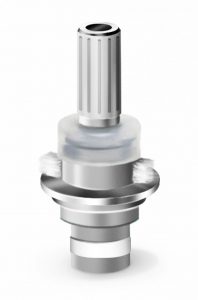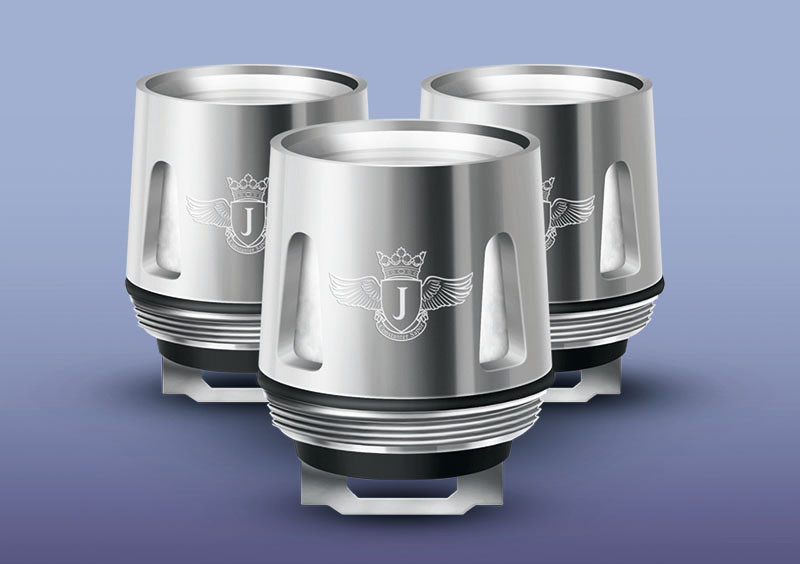Let’s get it right!
Our second article focusses on coils to help you get it right. Keep reading to find out why, what and how!
No coil, No vape

What is a coil?
There are many types of coils which exist. Coils are a small but mighty, essential element of your vaping device, and plays a BIG role in giving you a great vaping experience. Its role within your device is simple, it absorbs e-liquid, heats up the e-liquid and vaporises it. Sounds simple enough doesn’t it?
Things get a little bit more interesting when you start discussing the coil resistance as this affects just how much vapour will be produced and which coil should be used on which device. Resistance levels are measured in Ohms (Ω). The lower the number (e.g 0.5Ω), the less resistance, which means more vapour will be produced meaning more clouds. The higher the number (e.g 1.3Ω), means the level of resistance is greater and therefore not as much vapour can be produced.
A higher resistance = less air flow = less vapour = more throat hit
A lower resistance = more air flow = more vapour = less throat hit
What is a coil?
There are many types of coils which exist. Coils are a small but mighty, essential element of your vaping device, and plays a BIG role in giving you a great vaping experience. Its role within your device is simple, it absorbs e-liquid, heats up the e-liquid and vaporises it. Sounds simple enough doesn’t it?
Things get a little bit more interesting when you start discussing the coil resistance as this affects just how much vapour will be produced and which coil should be used on which device. Resistance levels are measured in Ohms (Ω). The lower the number (e.g 0.5Ω), the less resistance, which means more vapour will be produced meaning more clouds. The higher the number (e.g 1.3Ω), means the level of resistance is greater and therefore not as much vapour can be produced.
A higher resistance = less air flow = less vapour = more throat hit
A lower resistance = more air flow = more vapour = less throat hit
What’s in a coil?
There are many different types of coils on the market- normally either ceramic coils or cotton wick coils. Usually your device will come with one already installed so there isn’t too much to worry about in terms of which one to choose if you’re new to vaping. Here, the main thing to remember is that changing your coil regularly is important, but more of that later. Here at Jenson, we only use cotton wick coils due to the devices we sell.
To make a coil, it takes some wire or mesh and some wicking material such as cotton or porous ceramic. The resistance depends on just how compact the coil is wound. Remember a tighter coil will have higher resistance, giving less vapour and a stronger throat hit over lower resistance coils which give a smoother hit and bigger clouds.
Making your own is possible but unless you’re a seasoned vaping pro we’d recommend buying pre-made coils and always use the ones that your device manufacturer recommends. That way you’re guaranteed to get a great vape.
Remember, every device has a certain space for a coil which means most device coils differ. Always ensure you are buying the right coil for your device otherwise you won’t be able to vape.
What makes sub-ohm coils different?
You’ll have learnt so far that resistance is key to determining the right coil for your device and your vaping experience. Sub-Ohm vaping means vaping with a coil that is less than 1 Ohm (Ω). These coils are made to allow less resistance but as a result, demand more power to heat, so invariably the power pack on sub-ohm devices is bigger. The result of sub-ohm vaping is a smoother vape and bigger clouds but a weak (if any) throat hit. When sub-ohm vaping, you can only use high-VG e-liquid on sub-ohm coils. This is why your coil choice and e-liquid choice is imperative for successful vaping. Sub ohm vaping doesn’t satisfy the nicotine cravings as plus-ohm vaping would. Not everyone enjoys sub-ohm vaping, it’s a bit like Marmite 😉

How to know when to change a vape coil
This comes down to how much you use your device and the heat level. Coils are consumable items, so the more you use it, the quicker it will burn out. They’ll burn out eventually, but you’ll notice when your e-liquid doesn’t taste right. A ‘burnt’ taste is often what people describe as tasting when a coil is getting past its best. This is because the wick has been heated too much and burnt out.
As a rule of thumb for a vaper who uses their device regularly every day vaping a high-PG e-liquid replacing the coil every 10-14 days would be beneficial. Sub-ohm vapers should consider this a weekly maintenance (5-7 days) as high-VG e-liquid is thicker which can inhibit coils quicker.
How to change a vape coil
Before you start, make sure you’ve got a new one to hand. This always helps with making sure you replace like for like and you can see how the old one was secured in place.
Every device will be different and every manufacturer will provide instructions on how to do this. It’s usually a few very simple steps to follow and well worth the time getting it right.
The final stage after replacement is priming the new coil before you start vaping again. Ensuring the coil is fully ready again is the last step in coil maintenance. Priming the coil simply means getting it ready to vape. Once you’ve changed your coil to a new one, fill up your tank with e-liquid and let it sit there for a few minutes, while occasionally puffing on it (without actually pressing the button). This simple act will draw e-liquid into the coil, for it to be absorbed. If the coil isn’t fully soaked, then you run the risk of having a dry hit which will taste burnt and will ruin your coil.
Remember coils are small, coils are replaceable, and coils keep your device in tip top condition.

